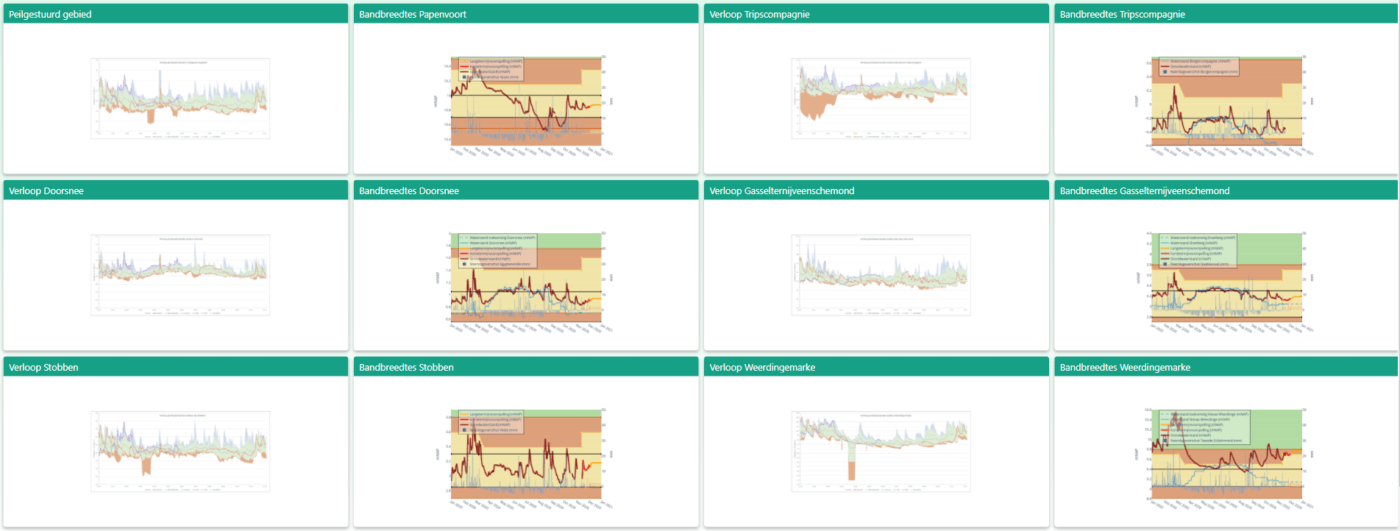Simulating groundwater levels using Machine Learning
- Client
- Waterschap Hunze & Aas
- Year
- 2020
- Location
- Veendam
By analysing groundwater data, we can improve our understanding of a hydrological system. With Machine Learning techniques or time series analysis, we can simulate and explain the behaviour of groundwater levels in response to certain variables. The advantages of these methods are that they offer the possibility to efficiently analyse and predict the fluctuation in groundwater levels at locations where measurements are taken. Only historical measurements are required for this analysis. We regularly apply this to:
- Investigate the effect of interventions in the hydrological system. For instance, the effect of abstractions on groundwater levels.
- Predict groundwater levels in the near future, based on meteorological forecasts.
- Fill missing data in groundwater level time series.
- Validate hydrological models by simulating groundwater levels at measurement locations.
- Apply groundwater level simulation results as input for other models. For instance, to make flow predictions in catchment areas.
The challenge
We are happy to help you set up (real-time) Machine Learning models for simulations and predictions. To do this we use open-source software written in Python. This software is suitable for performing analyses, as well as for integration into real-time forecasting systems.
An example is Pastas. Pastas is an open-source time-series analysis program developed in Python by Artesia and TU Delft. It is specifically aimed at modelling hydrological time series. Using Pastas, it is possible to translate one or more time-series of input variables into a groundwater level time series. This is done by means of transfer function-noise modelling. Each input series is converted into a component of the groundwater level using a transfer function. In addition, the remaining part of the groundwater level is described with white noise. All components are finally added together to form the output series (groundwater level). The values of the parameters of the transfer function(s) are estimated by calibrating the model against the output series.
Our solution

An example project, in which time series analysis has been used to simulate and predict groundwater levels, is the expansion of the dashboard for groundwater level management of the Hunze en Aa’s Water Board. This dashboard includes an overview of the course of the observed groundwater levels at various measurement locations within the management area. In addition to the historical course, a forecast is now also displayed at various measurement locations. This visualises the response of the groundwater level to the predicted precipitation and the maintained surface water level.
The outcome
A Pastas model has been set up for each location, which is calibrated in real-time. Every other day the models are fed with actual field measurements and recalibrated. In the models, the daily precipitation, evaporation and, if applicable, the surface water level of a nearby watercourse are used as input. By setting up the model in a self-learning manner, it improves itself on the basis of new insights.
Short-term and long-term predictions are performed after the calibration of the models. The short-term forecast has a duration of 12 days and is fed with an EPS precipitation forecast, the extended current evaporation and the extended current surface water level. The long-term forecast covers the following period up to a month in advance and is fed with the current extended water level and scenarios for precipitation and evaporation based on historical data.
All cases